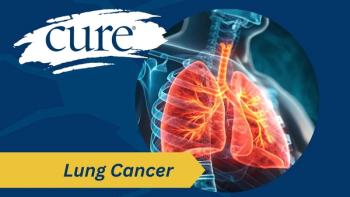
Muscle Mass and Density Could Factor Into Treatment Decisions and Survival for Some Patients with Lymphoma
In patients with diffuse large B-cell lymphoma, low muscle mass (LMM) and low muscle density (LMD) could play a role when deciding what kind of treatment option to pursue, and could also impact a patient’s odds of survival, according to a recent study.
In patients with diffuse large B-cell lymphoma (DLBCL), the most common form of non-Hodgkin lymphoma, low muscle mass (LMM) and low muscle density (LMD) could play a role when deciding what kind of treatment option to pursue, and could also impact a patient’s odds of survival, according to a recent study published in the journal Leukemia & Lymphoma.
In recent years, researchers have spent more time examining patients’ muscle mass and density in relation to how well they can tolerate treatment, the authors noted. However, many studies reporting on LMM and LMD often use different definitions for each term, and various factors relating to age or unfavorable disease characteristics also make it difficult to come to any concrete conclusions.
That’s why a team of researchers from the Netherlands set out to investigate how LMD, LMM and the combination of both relate to survival in patients with DLBCL, while also evaluating the prevalence of LMM and LMD in this patient population compared to a database of healthy kidney donors, which they used to create a standardized way to measure muscle.
In the single-center retrospective study, researchers used the Netherlands Cancer Registry to identify 164 patients with DLBCL that were diagnosed at a large regional hospital in the Netherlands between January 2006 and December 2015. Patients were excluded if they had a second active malignancy or a history of malignant lymphoma in the past. Information about the patient characteristics, height, weight, chemotherapeutic dosage and tumor response were all collected.
The primary endpoint of the study was overall survival (OS), defined as the date of diagnosis to the end of follow-up or death whichever came first. Secondary endpoints were progression-free survival (PFS), the complete remission (CR) rate and completion of planned treatment.
The median age of all patients was 64.5 years, with two-thirds of patients above age 60. One hundred and twenty-nine patients (79%) saw complete response after therapy, and the median duration of follow-up was 57 months. CT-based measurements of muscle mass were made on all 164 patients prior to chemo-immunotherapy, who were then given scores that were also adjusted for gender, age and body mass index derived from the healthy reference group.
Overall, the authors noted that the combination of LMM and LMD, which was found in 13% of patients, was an independent risk factor for shorter overall survival and progression-free survival.
When looking at what patients went on to complete treatment, they also found that patients with LMM and LMD frequently discontinued the standard treatment of chemotherapy combined with the monoclonal antibody Rituxan (rituximab). These patients were also less likely to achieve a complete response.
While the authors note that the lower CR-rate could be a result of treatment termination, they cited another study to offer further explanation. “In a study involving 187 DLBCL patients, CR-rate did not differ between patients with LMM and patients with normal muscle mass if it was possible to administer all planned treatment cycles,” they explained. “Therefore, it is possible that premature termination of treatment is the cause of the diminished CR-rate, highlighting the possibility that targeting LMM/LMD might result in a higher CR-rate, thereby improving survival.”
The authors also explained that OS and PFS in their study were highly comparable, leading them to believe that the cause of death in the patients they evaluated was mainly due to disease progression.
“Muscle measurement may help to guide optimization of chemotherapy dosage in order to reduce toxicity, while still maintaining oncological efficacy,” the authors concluded. However, in order to best benefit patients, standardization of muscle measurement is needed, and more study is needed to investigate the prognostic impact of LMM and LMD, and to determine if optimization of these factors during treatment could result in a higher CR-rate and prolonged survival.




